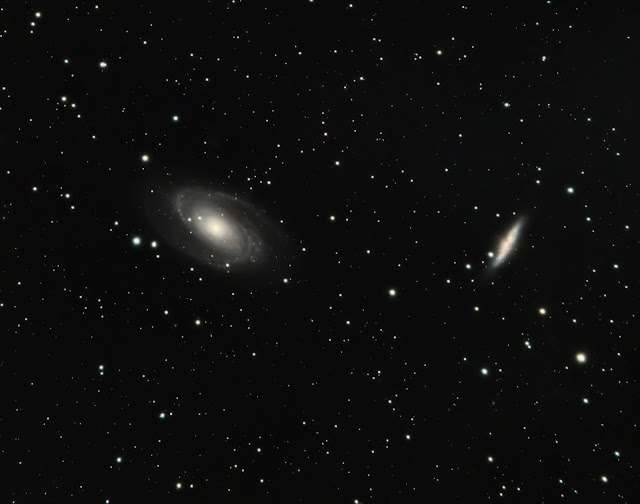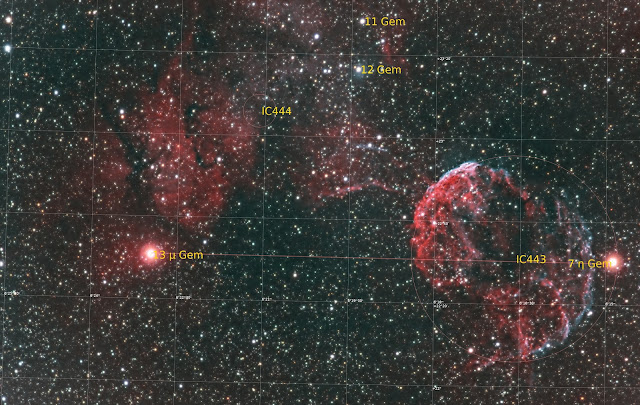I thought it might be a worthy experiment to see how the L-Ultimate filter could add to the Ha detail of galaxies using a OSC Camera. So the obvious choice for my 61mm refractor was M81/M82, Bodes and Cigar Galaxies with the latter having a great Ha jet coming out of the middle of it's core.
For RGB I used the Optolong L-Pro filter with the ZWO 183MC Pro camera. I ended up taking:
(144) 180 second exposures for a total of 7.2 hours.
Notice how little red is showing in the Cigar Galaxy on the right.
The Hydrogen Alpha addition
For the Ha, I used my newly acquired Optolong L-Ultimate filter which passes Oiii and Ha at 3 nanometers. I ended up taking:
(144) 180 second exposures for a total of 4.5 hours. The filter really cuts out everything else but getting enough Ha is so hard with a one shot color camera given the RGGB Bayer matrix. Having only 1 pixel out of 4 to collect the Ha (Red light) is a huge challenge.
The Ha is so much less on Bodes than I though it would be in the spiral arms. If look closely on the zoomed in version, you'll see the nebulae it picks up. For the Cigar, I was pleasantly pleased with the Ha but certainly would have to triple the time to get anywhere near shooting it in Narrowband.
The Final Image
Let me start out by saying my skills to add Ha to RGB are in need of an upgrade. But overall the experiment worked.
Personal Conclusion
While I enjoyed the experiment, I won't be doing this again with a One Shot Color camera. The amount of time needed to add Ha to a galaxy just isn't worth it for my personal taste. Some others might like it but it isn't for me :-)























PSF Signal Weight, Elongation, FWHM, # of Stars"